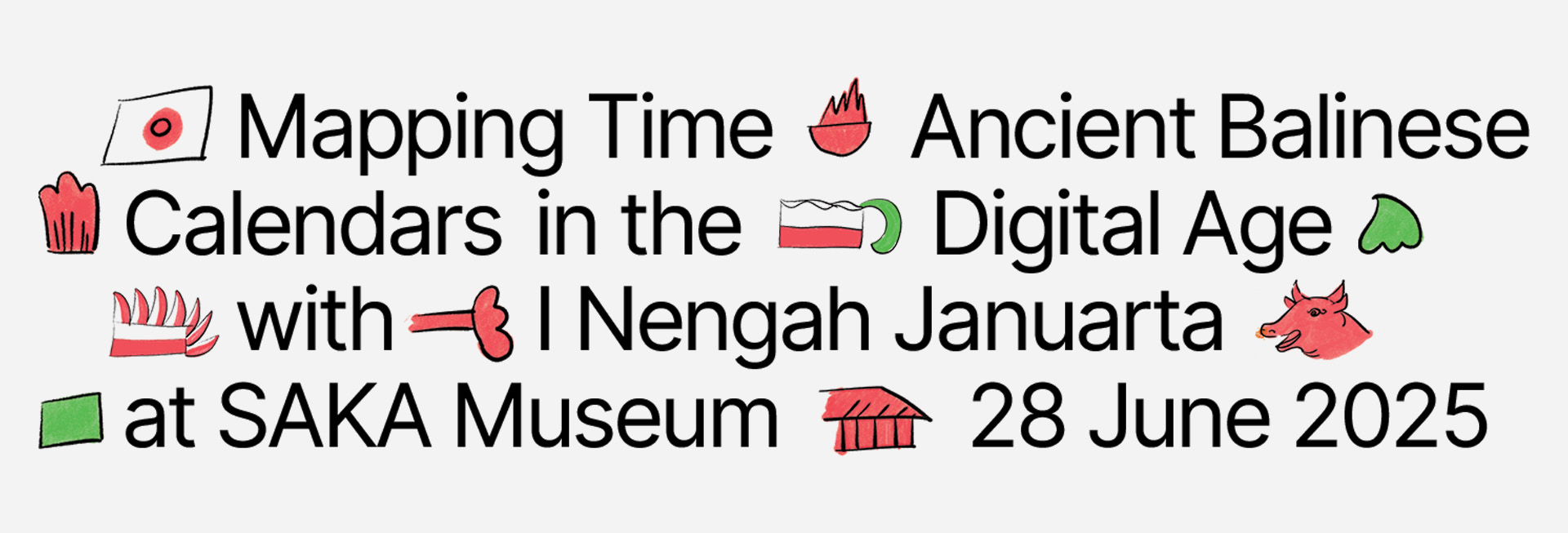KALA.02: Timeless Balinese Calendars Meet Digital Innovation
by Marlowe Bandem
Denpasar, 7 July, 2025
On the evening of Jun 28, 2025, SAKA Museum held the second session of its KALA conservation series. This event, titled Mapping Time: Ancient Balinese Calendars in the Digital Age, was delivered in Indonesian and featured I Nengah Januartha, a programmer and archivist who has spent over a decade working at the intersection of traditional Balinese culture and digital technology.
Januartha introduced two digital tools developed for SAKA Museum: SAKA Palelintangan and SAKA Tika.These applications help users understand complex Balinese calendrical systems through intuitive, easy-to-use interfaces – making these traditions more accessible for younger generations and everyday users to engage with traditional timekeeping practices.
.jpeg)
The evening began with an introduction from Marlowe Bandem, who moderated the session. He explained how SAKA Museum’s exhibitions are timed to align with the Balinese lunar calendar, known as the sasih. He gave the example of the Kasanga exhibition, which coincided with the ninth lunar month and the observance of Nyepi, Bali’s Day of Silence. Similarly, Subak: The Ancient Order of Bali runs alongside the harvest ceremony Ngusaba Kadasa, which is celebrated on the full moon of the tenth month in the Batur region.
In response, Januartha explained that this curatorial approach reflects a deeper cultural logic embedded in Balinese life. He noted that it mirrors a broader reality in Bali, where multiple calendar systems are used concurrently. Among these, the Saka calendar, adapted from Indian traditions, is a lunisolar system that marks its new year with Nyepi, usually in March. It consists of twelve lunar months and occasionally adds a thirteenth to stay in sync with the seasons. The Wuku calendar is a separate system unique to Java and Bali, based on a 210-day cycle that divides the year into 30 weeks of seven days. Each week carries specific names, traits, and meanings.
Beyond these two primary calendars, Balinese timekeeping also relies on tools such as the Tika, a traditional almanac used to determine favorable days for agriculture and ritual ceremonies. The Palelintangan is a form of local astrology that connects birth dates and constellations to personal characteristics and compatibility. Palelindon, a lesser-known system, is used to interpret the spiritual meaning of earthquakes based on their timing within the lunar cycle.
For Januartha, Balinese time is not only cyclical but also symbolic. Time is understood through its connection to nature, ritual, and cosmic alignment. This differs from the modern Gregorian calendar, which tends to prioritize linear progression and efficiency. In Balinese culture, time unfolds through patterns that return and repeat, forming an intricate and meaningful structure that guides both religious life and daily activities.
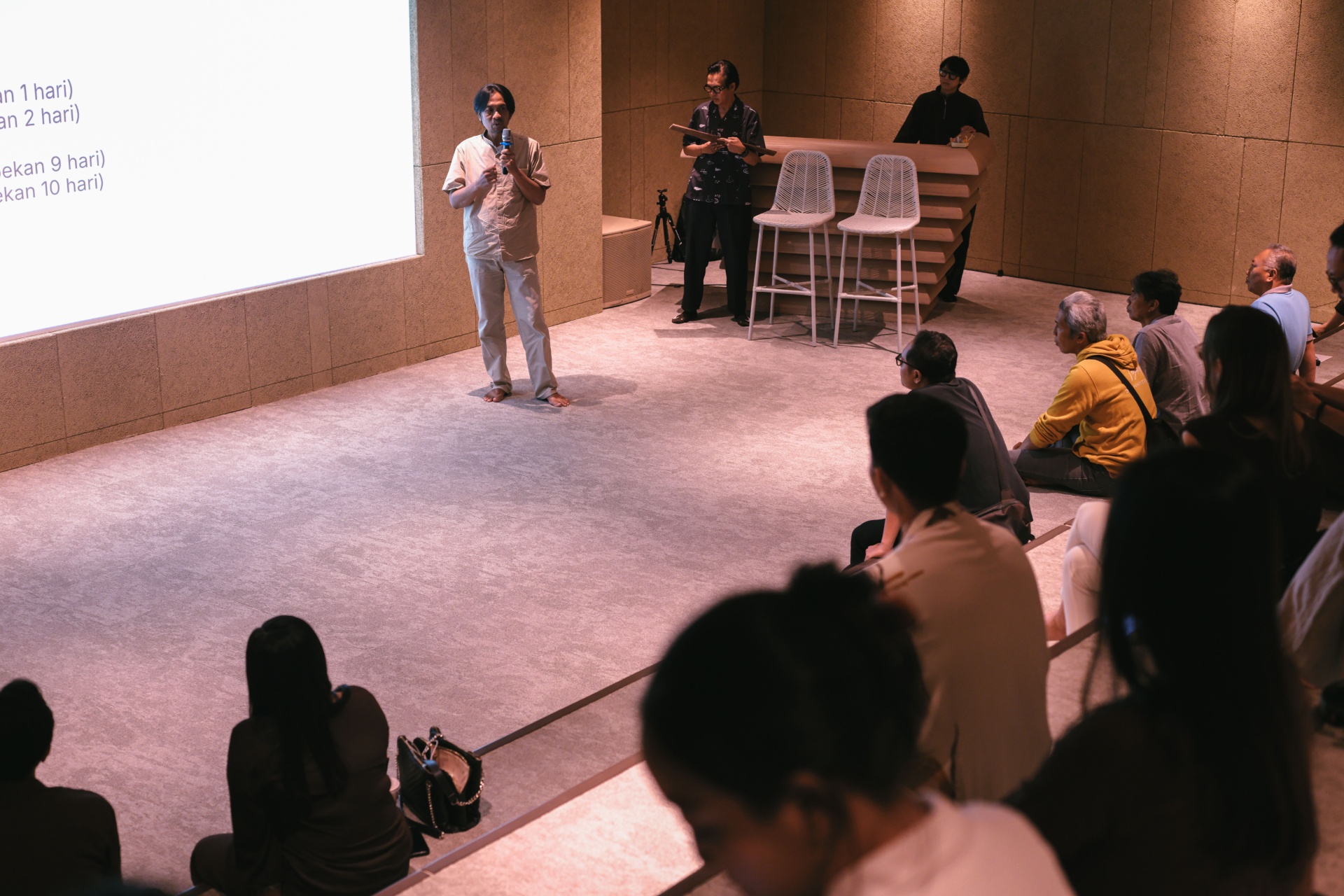
The session featured a live demonstration of the apps, as Januartha guided participants through their real-time functions while emphasizing the calendars’ practical role in daily Balinese life. The timing of ceremonial events (dedinan) such as otonan (birth anniversaries), nelu bulanin (three-month baby blessings), mesangih (tooth filing), and pawiwahan (weddings) is calculated through the convergence of these calendrical layers. Agricultural planning, market days, and communal decisions also follow this rhythm, guided by readings such as paringkelan (prohibitions) and ala ayu dewasa, which distinguish auspicious from inauspicious times.
A standout moment was his breakdown of the Tika system from a programming perspective. He explained how its structure forms a grid of 30 Wuku (thirty-week cycles), layered with overlapping time units from Ekawara (one-day weeks) to Dasawara (ten-day weeks). These cycles rarely align neatly, but their intersections generate rich and nuanced interpretations.
Januartha highlighted key moments in the Tika that hold special significance for the Balinese. One is Sri Tumpuk, which occurs when the figure of Sri in both the four-day Caturwara and the eight-day Astawara cycles align on the same day. It is a convergence especially meaningful for farmers, as it signals a fertile period ideal for planting.
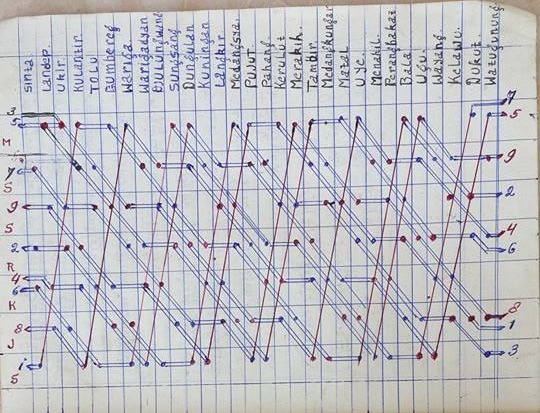
Another notable feature is the sequence of red triangles in the Saka Tika, which denote Kala in the Astawara cycle. When these markers appear three times in a row during the Dungulan week, it heralds Galungan, the major festival celebrating the victory of dharma over adharma. Leading up to Galungan (always a Wednesday), the trio known as Sang Kala Tiga (Sang Kala Galungan, Sang Kala Dungulan, and Sang Kala Amangkurat) are believed to exert malevolent influences on mind, speech, and action from Sunday to Tuesday, testing people’s virtue. Simultaneously, the Jaya marker in the Caturwara cycle repeats three times, reinforcing the theme of triumph.
.jpeg)
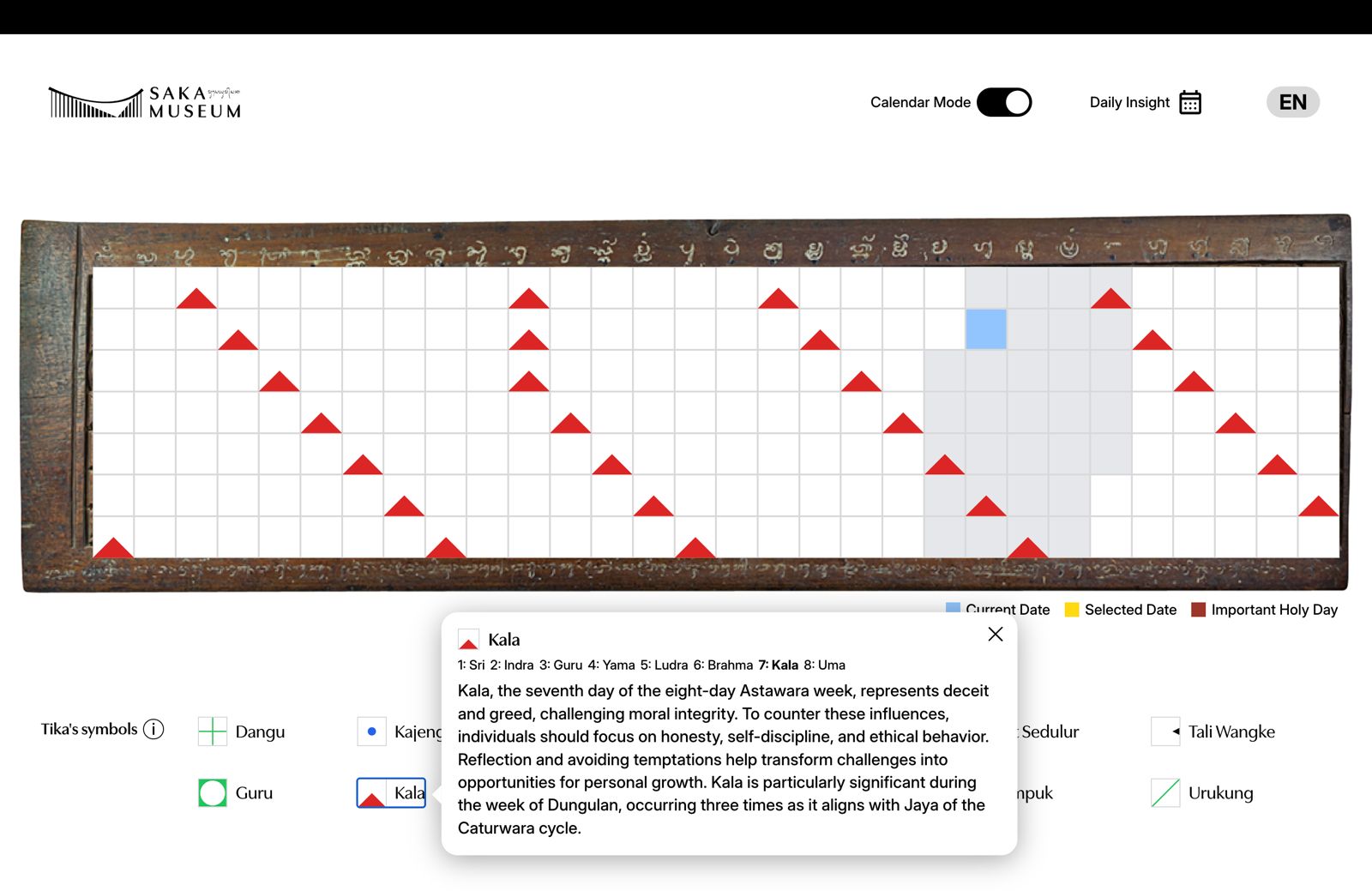
The conversation also touched on current challenges. Januartha noted that the timing of the seasons is becoming less predictable. Rainfall during Nyepi, which traditionally marks the start of the dry season, has become more common. Climate change is affecting agriculture and disrupting long-held patterns. He suggested that collaboration between cultural experts, scientists, and local communities could help recalibrate traditional calendars to better match today’s climate conditions. His call for adaptation emphasized that cultural systems must evolve in order to stay relevant.
This theme of time, especially how we experience it, how we interpret it, and how it shapes the lives of the Balinese, was central to the evening. Fittingly, KALA.02 also marked the launch of SAKA After Hours, the museum’s new evening program that keeps its doors open until 8:00 PM. By extending the museum’s hours, visitors are invited to linger a little longer with time itself; to slow down, reflect, and engage with the rhythms and cycles explored in the exhibition.
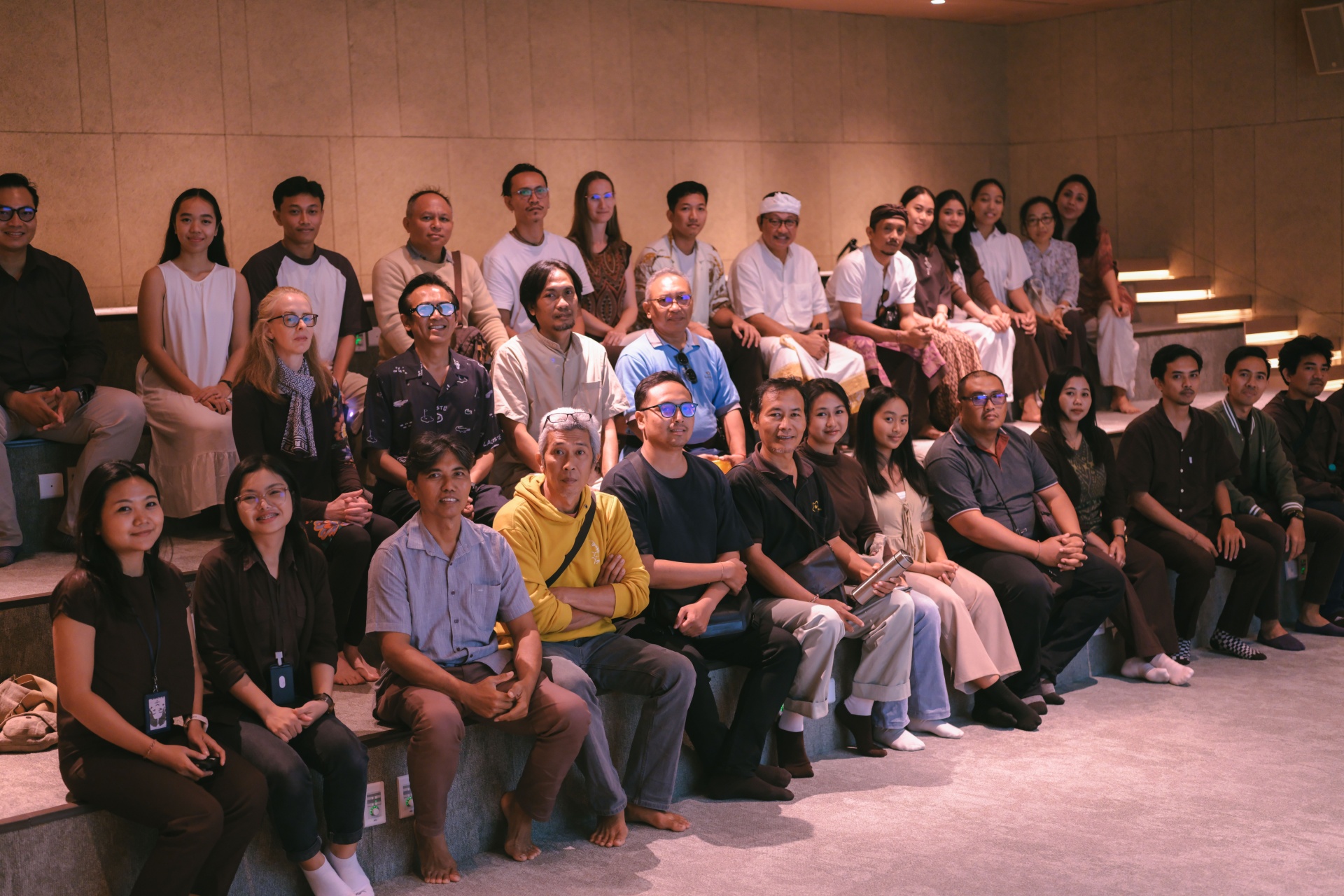
As the session ended, what lingered was more than a conversation about calendars. KALA.02 became a reflection on how traditional ways of marking time still resonate today and how digital tools like SAKA Tika and SAKA Palelintangan can carry ancestral knowledge into the future by renewing our connection to it.
For those curious to explore the living layers of Balinese time, SAKA’s calendrical apps are available daily from 10:00 AM to 6:00 PM, and until 8:00 PM during SAKA After Hours. While at the museum, we invite you to wander through our exhibitions, where timeless culture is boldly reimagined.
See you at SAKA Museum!
The KALA (Knowledge, Artistry, Legacy, Awareness) series is part of SAKA Museum’s ongoing mission to create a sustainable conversation about Balinese culture and contemporary thought. Each session draws together voices from across disciplines to explore how culture evolves while remaining rooted.
